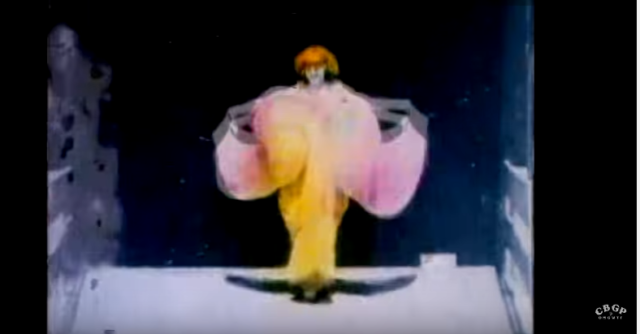
The process began in the 1890s, originally as a copy-guard against film pirates. The film was tinted amber, the color of the safelight on film printers. The discovery of bleaching methods by pirates soon put an end to this. Both the Edison Studios and the Biograph Company began tinting their films for setting moods. Because orthochromatic film stock could not be used in low-light situations, blue became the most popular tint, applied to scenes shot during the day and when projected, signified night.
A variation of film tinting is hand coloring, in which only parts of the image are colored by hand with dyes, sometimes using a stencil cut from a second print of the film to save keep colouring the same piece on different frames. The first hand tinted movie was Annabelle Serpentine Dance (1895), from Edison Studios. In it, Annabelle Moore, a young dancer from Broadway, is dressed in white veils that appear to change colors as she dances.

The dance is performed in succession in a lockoff shot. The first is in a flowing skirt, held out by her hands with arms extended. She smiles, wearing butterfly wings on her back and the wings of Mercury in her hair. Her dance emphasizes the movement of her visible, bare legs. She kicks high, bows, and moves to her right and left. The second dancer has a voluminous, long skirt, and holds sticks in each hand attached to the skirt’s outer edges. The flowing patterns of the skirt from her arm movements give the second scene a different feeling from the first.
Different versions of the film were released on four different dates: August 10, 1894; February 1895; April–August 1895; and May 8, 1897. The film was directed by William K.L. Dickson and William Heise. Heise was also producer and camera operator.
Film historians have commented on the possibilities for viewers to slow down the hand cranking of the footage in was not technically possible in other art forms.
Annabelle was quite popular in her youth. The sale of her films was further boosted in December 1896 when it was revealed that she had been approached to appear naked at a private dinner party at Sherry’s Restaurant. It was said she introduced eroticism in film.Although she was very popular before her marriage, Annabelle died penniless in Chicago in 1961.
